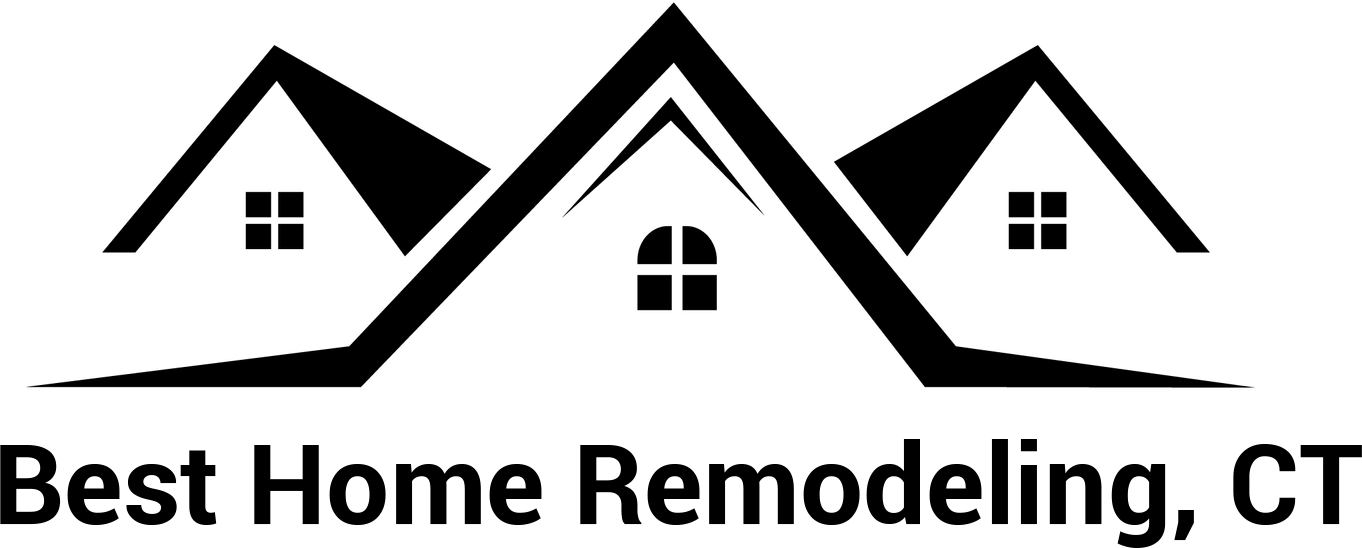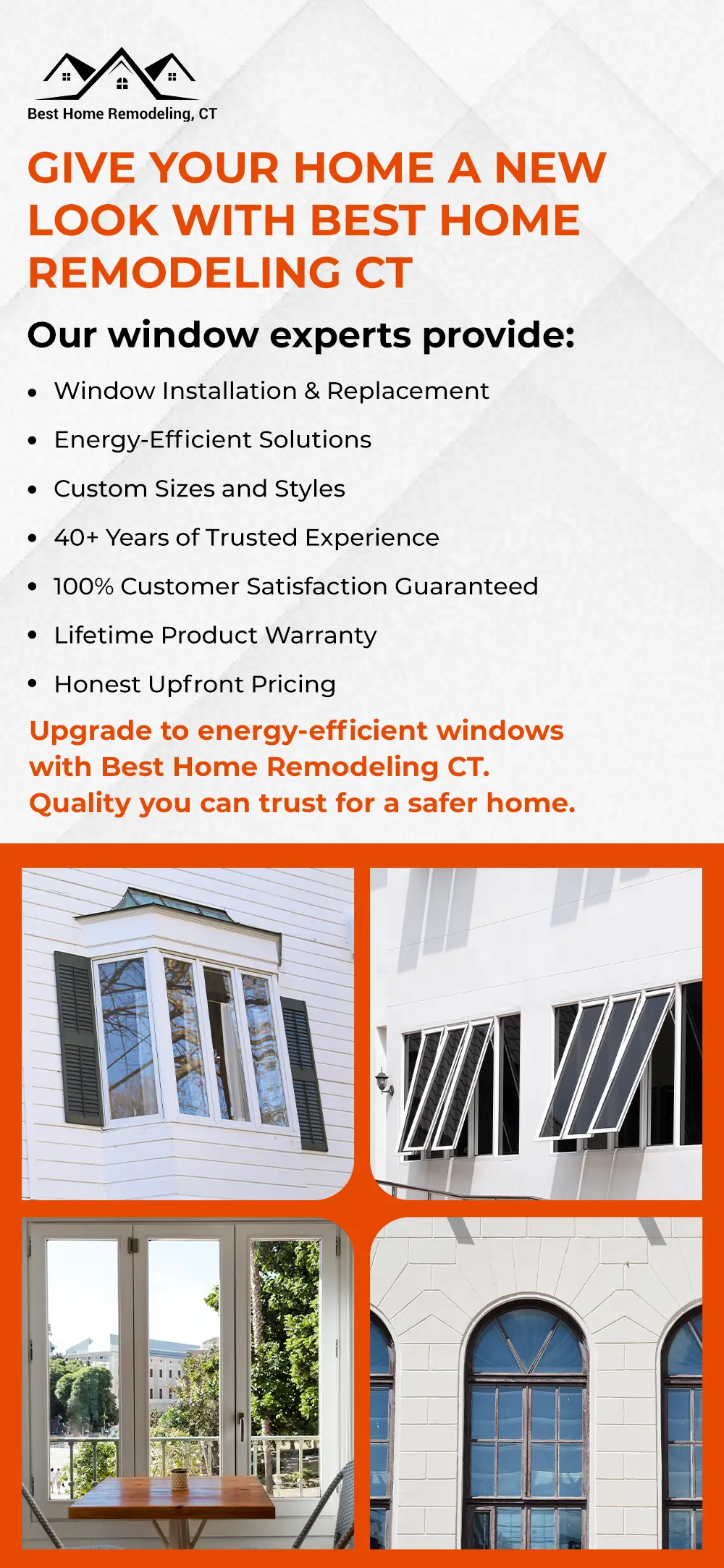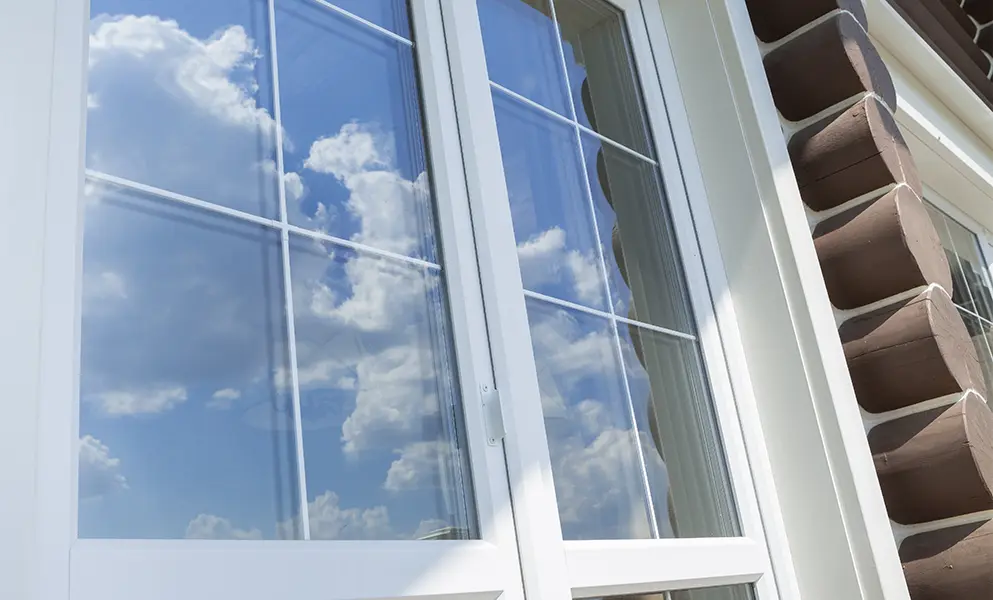Windows can enhance the aesthetics, value, and functionality of any place. Different types of windows serve various purposes.
As a homeowner, you might be confused about which window to choose and install from the wide range of options. If you’re wondering which window type to choose for your replacement or remodeling project, you’ve landed at the right spot.
This blog will explore various window types, the best place to install them, and their pros and cons. This will help you make a guided decision.
8 Best Window Types for Home
Some of the popular, modern, and traditional window styles for the home are as follows:
1. Casement Windows
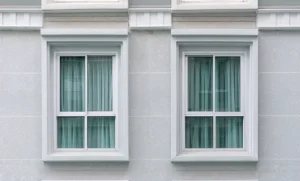
These windows are also known as crank windows. They swing open like a door and open outward. A hand-crank, cam, or lever is used to open them.
Moreover, they usually have one pane of glass. They are well-operated at a site where accessibility is not ideal.
Best Places for Casement Windows
Casement windows are ideal for several spaces in your home, including:
-
Hard-to-Reach Areas
As they open outward with a crank, they are best for places where accessibility to open a window is challenging, like over countertops, sinks, appliances, etc.
-
Bathrooms and Kitchens
They can also be installed in bathrooms or kitchens due to their full opening ability, allowing expulsion of odors and humidity.
Pros and Cons of Casement Windows
Here are a few advantages and drawbacks of crank windows:
| Pros | Cons |
| Allow excellent ventilation if placed strategically to create cross-breezing | Need clear space outside to operate, making their installation hard in narrow spaces |
| When casement windows are closed, the sash makes a tight seal, making them an energy-efficient option | The crank, cam, or lever can rust or wear with time if not maintained properly |
| Provide clear scenic views, as they don’t have any dividers or rails | |
| Easy operation, making them user-friendly, and also requiring easy cleaning |
2. Bay and Bow Windows
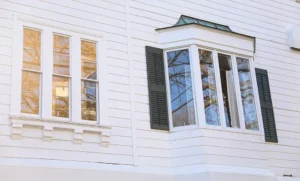
Bay and Bow windows are somewhat similar in a manner that both extend outward from the wall. They give a panoramic view, bringing in natural light with great ventilation.
Bay Windows:
Bay windows have three or more openings, set at angles. A central window is generally fixed, surrounded by other windows set at 30, 45, or 90° to the wall. The other windows can be fixed or openable.
The side windows of the bay can be casement or double-hung, allowing great ventilation. All the windows project outward from the home.
Bow Windows:
Bow windows have 4 or more windows that make an arc outward. They consist of the same size windows, giving a rounded appearance. All the windows are joined at slight angles to give a curved wall appearance.
Best Places for Bay and Bow Windows
Bay and bow windows can be placed anywhere in the home where you want ventilation, natural light, and cozy space, including:
-
Living Rooms
The most common place where bay or bow windows are installed is the living room. They not only increase ventilation and natural light, but also give a vibrant, scenic outdoor view. Moreover, it also provides a relaxing space to read a book, enjoy a cup of coffee, or amuse yourself with outdoor views.
-
Kitchens
Kitchens are great places for bay or bow windows. They can be installed above the sink to provide a scenic view while doing dishes or preparing food. You can also install them somewhere else in the kitchen to sit and enjoy morning coffee.
-
Master Bedrooms
A bow or bay window in a master bedroom can make it luxurious and elegant. Installing them on the right side of the house allows you to enjoy the sunrise upon waking up. You can also have a cozy corner to relax before bedtime.
-
Home Offices
These windows make a home office inviting and comfortable. If you work on a laptop or a computer, the scenic views or natural light can help you stay sane or relax during the work. You can also use the alcove space for additional storage or a relaxing spot.
-
Dining Rooms
For dining rooms, these windows can add space, natural light, and an airy feeling. You can opt for traditional or modern styles as per your unique needs. Placing plants, shelves, or window dressing can enhance the appearance of your dining area.
Pros and Cons of Bay and Bow Windows
Here are a few advantages and disadvantages of bay and bow windows:
| Pros of Bay and Bow Windows | Cons of Bay and Bow Windows |
| Increase the aesthetics and beauty of any space, which drives up the resale value of your home | More expensive than other window types due to their complex installation process |
| Creates extra space for seating, storage, displays, or more | Cleaning is difficult due to the design |
| Multi-window design offers increased natural light and ventilation | May require structural support, which can add complexity and cost |
| Make the space feel bigger, airy, and more inviting | |
| Their versatility makes them suitable for various architectural styles, including traditional, classic, or modern |
3. Single and Double Hung Windows

Single and double hung windows, also known as sash windows, are quite similar except for their movable and fixed sash.
Single-Hung Windows
These window types have a classic design with a stationary upper sash and an operable lower sash. The bottom sash slides vertically up and down, while the upper sash remains fixed. These windows are a less versatile option than double-hung ones.
Double-Hung Windows
As their name implies, double-hung windows have two vertical sashes, both are operable. They are popular and versatile windows due to their ventilation options. Moreover, you can also keep your kids safe, as the upper sash can be opened for ventilation, making it a convenient option.
Best Places for Single Hung Windows
Single hung windows are perfect for places like:
-
Areas that require limited opening
As single-hung windows don’t open fully, they’re a great choice for areas where airflow isn’t your primary concern. They are perfect for spaces like stairwells and closets.
-
Ground Floors
As the top sash of single ply windows is stationary; therefore, it can be hard to reach and clean the outside of the window if installed on upper floors. Thus, it is better if they’re installed on ground floors, making it easy to clean and maintain.
-
Traditional or Classic Aesthetics
They are great for traditional or historic homes. If you want to give a classic look to your new construction home, these traditional window styles fit perfectly.
Pros and Cons of Single-Hung Windows
Here are a few advantages and drawbacks of single-hung windows:
| Pros | Cons |
| Cost-effective in comparison to other types of windows. These affordable window styles are suitable for people with a tight budget | As only their bottom sash opens, they provide limited ventilation |
| They are less prone to air leakage due to their single movable sash, making them an energy-efficient option | Cleaning the exterior of the upper sash can be challenging if installed on the upper floors |
| Can be easily installed and maintained due to their straightforward design | |
| Perfect for homes with classic, traditional, or historic styles |
Best Places for Double-Hung Windows
Double hung windows are ideally placed where ease of cleaning, accessibility, and ventilation are desired, including:
-
Upper Levels
Unlike single hung windows, these windows can be installed on the upper floors, as they can be cleaned easily. Their tilt-wash feature allows them to open inwards which makes cleaning and maintenance easy.
-
Small Rooms
Ideally, they can be installed in small rooms requiring ventilation. As both their sashes can be opened, they allow enough ventilation.
-
Rooms Facing Patios, Sidewalks, and Porches
As they don’t protrude into the space when opened, they are highly suitable for rooms near outdoor areas, like sidewalks, driveways, patios, etc.
Pros and Cons of Double-Hung Windows
The following are a few advantages and drawbacks of double-hung windows:
| Pros | Cons |
| Provides excellent airflow and ventilation | More expensive than single-hung windows, making them a less affordable window style option |
| Easy to clean and maintain, as both sashes have a tilt-in mechanism | Air leakage is possible in comparison to single-hung windows |
| Versatile in nature, it fits well with all architectural styles (classic or modern) |
4. Awning Windows
Awning windows are single-pane windows that are pivoted at the top of the frame and open outward from the bottom. They can be opened with a lever, handle, or crank. This creates an awning effect, protecting from rain.
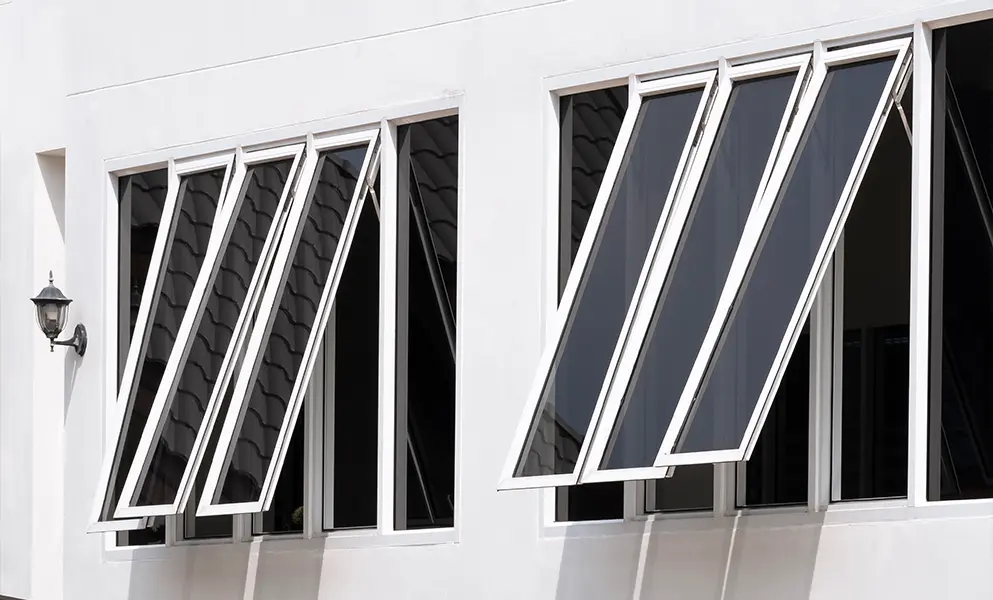
They are small and can be installed at height. This adds architectural interest and provides ventilation and light without compromising on privacy.
Best Places for Awning Windows
These window types are specifically suited for the following:
-
Basements
These windows are generally installed above ground level in basements. They are perfect for natural light and ventilation in basements. They also don’t pose any security risks.
-
Bathrooms and Kitchens
Awning windows are installed high on the walls for airflow and natural light. This allows privacy and a spacious environment.
-
Rainy Climate Areas
If you live in a high rainfall area, these windows can ensure continuous airflow without water entering the house during storms.
Pros and Cons of Awning Windows
Here are a few advantages and challenges of awning windows:
| Pros | Cons |
| Provides light and ventilation while offering protection during rainy weather | As they open outwards, they can block driveways, walkways, decks, etc. |
| Being versatile, they can be placed in various areas, including hard-to-reach areas | Have a small size as compared to other window types |
| Pose some cleaning challenges, as the exterior can’t be cleaned from the inside |
5. Picture Windows
Picture windows are large, fixed panes of glass that are not movable. They are designed to provide an unobstructed, clear outside view. Neither they open nor they close. 
They are named after their ability to reflect the outside landscape like a picture frame. Being large, they allow ample natural light. Mostly, they’re installed in areas where people sit and spend leisure time to capture beautiful views.
Best Places for Picture Windows
Picture windows are placed in the spaces where the focus is on capturing a stunning scene or where privacy is not usually a concern, such as:
-
Living Rooms
Picture windows in living rooms act as a centerpiece of the space. It floods the room with natural light and provides stunning outside views.
-
Staircases or Hallways
Hallways and staircases are the places that are usually closed off or dark. They can be brightened up by installing picture windows.
-
Dining Areas
If your dining area has beautiful, scenic views, then placing a picture window in the dining or drawing area can make your meals more enjoyable.
-
Home Offices
For your home office, a picture window can offer a peaceful backdrop. It also allows you to enjoy views while working to keep yourself at comfort.
Pros and Cons of Picture Windows
The following are a few pros and cons of picture windows:
| Pros | Cons |
| Provide a sleek, modern look to increase the exterior and interior beauty of the home | Since they don’t open, they lack natural airflow |
| Allow natural light to enter, making the room feel spacious, larger, and open | These windows are not suitable for areas where emergency exits are required, as they don’t open |
| The large, expansive glass windows provide beautiful outdoor views, reducing worry and stress | It can be hard to clean and maintain from the outside if placed on the upper levels |
| Highly energy efficient as they don’t open, which reduces the chance of heat loss or gain. High-quality window glazing also makes them energy efficient | |
| As they don’t have any openings or mechanical parts, they’re lower maintenance than operable windows |
6. Sliding Windows
Sliding windows are also known as glider or slider windows. These have one or more glass panels that move side-to-side horizontally along a track. Some designs allow both panes to move, while in some types, at least one pane is movable and the other is fixed.

They are usually installed in places where vertical space is limited. Moreover, these windows have maximum glass area.
Best Places for Sliding Windows
As sliding windows have a minimalist design, they’re easy to operate. This makes them a popular and modern window type. They can be installed in:
-
Kitchens
Sliding or glider windows are perfect for kitchens if you need to maximize ventilation or space. You can install them above the sink, along the wall, or in the area leading to an outdoor space like a patio or walkway.
-
Bedrooms or Living Rooms
Installing sliding windows in the living room or bedroom can give expansive views, making the room feel spacious, airy, and bright.
-
Rooms Facing Patios or Walkways
Unlike casement or awning windows that open outside, these windows won’t obstruct exterior spaces.
Pros and Cons of Sliding Windows
Some of the advantages and disadvantages of sliding or slider windows are as follows:
| Pros | Cons |
| They’re easy to open with fewer mechanical issues due to their simple design | It can be challenging to clean the fixed exterior glass from the inside |
| As they don’t open outwards, they are space-efficient, making them perfect for locations next to high-traffic areas | They have sealing inefficiencies. They are more prone to air leakage as compared to double-hung or casement windows |
| Provides extensive, scenic views of the outside and brings in natural light | |
| Allows ventilation and natural airflow |
7. Skylight Windows
Skylight windows, also known as roof windows, are installed in the ceiling of a house to give a direct view of the sky above. Their distinctive style allows the natural sunlight to flood in. This makes them an excellent option for areas where side window installation is not possible.

From small circular windows to large rectangular or square windows, they come in a range of sizes and shapes. These can be fixed or operable. The operable windows allow natural light and airflow.
Best Places for Skylight Windows
Roof windows are generally installed where there’s no space for wall windows. Some of the best places to install skylight windows are as follows:
-
Kitchens
Skylights in the kitchen cu want to add a dramatic and unique element to youan enhance the natural light and can vent out cooking heat and odors. They can help in maintaining a healthy air flow and excellent ventilation.
-
Bathrooms
They are ideal for bathrooms as they let in natural light while maintaining privacy. If openable, they can provide great ventilation.
-
Living Rooms
If you want to add a unique and dramatic element to your living room space, then skylights are for you. They are perfect for high-ceiling living rooms, offering natural light and airflow.
-
Hallways or Staircases
Staircases and hallways are often the darker areas of the home where there is no light or airflow. You can make them airy and lighter with skylights installation.
Pros and Cons of Skylight Windows
Here are some advantages and drawbacks of skylight or roof windows:
| Pros | Cons |
| Enhance natural light in spaces, specifically those without external walls or windows | They can cause excessive heat loss in winter and heat gain in summer if not installed properly with energy-efficient glazing |
| As they provide natural light, they can lessen the artificial lighting during the day | As they are installed at a height, they are difficult to clean and maintain |
| Skylights that can be opened can improve airflow, bring fresh air, and improve indoor air quality | They are more expensive than other windows due to their complex installation process and structural considerations |
| These windows are unique in style and also increase the home’s value |
8. Transom Windows
Transom windows are decorative windows that are installed above a door or larger windows. These small traditional window styles are used historically in both residential and commercial architecture.
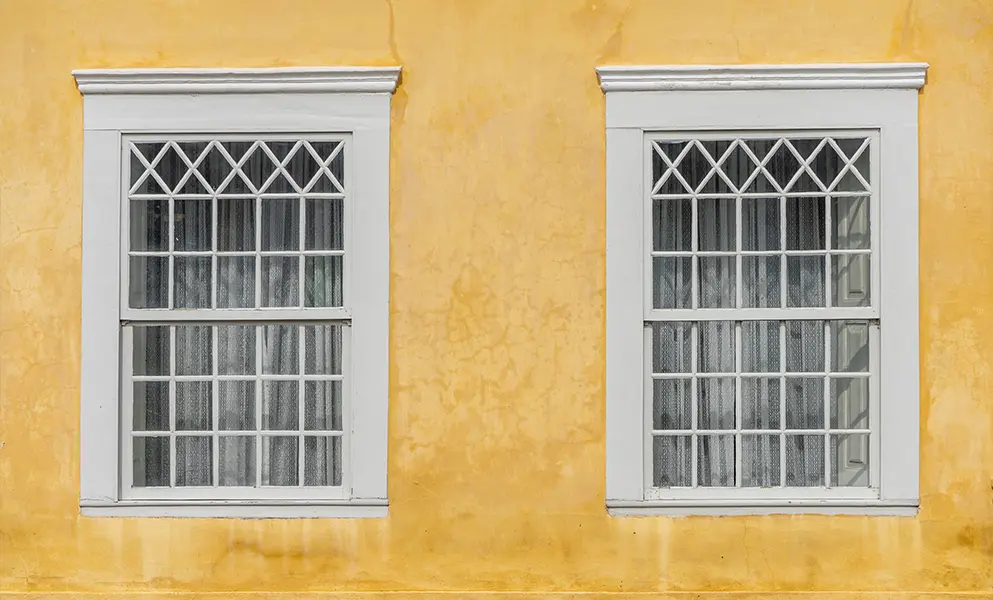
These windows are set into a transom bar. This separates the top of the door/window from the window above it.
These were designed for functionality and aesthetics. They can be fixed (non-operable) or operational (able to open).
Best Places for Transom Windows
These window types are specifically effective in some areas of the home, including:
-
Entryways
They’re installed above the front door to improve the aesthetics and give a glimpse of the style.
-
Kitchens
They can be placed over doors or cabinets in the kitchen. These windows can bring light to areas that are generally shadowed.
-
Bathrooms
These windows can be installed above doorways or privacy walls within bathrooms. They provide extra light while also maintaining privacy.
Pros and Cons of Transom Windows
The following are the pros and cons of transom windows:
| Pros | Cons |
| Increase natural light and ventilation even in small spaces | If operable, they’re difficult to reach and open due to their high placement |
| They don’t take much wall space, making them ideal for small rooms or spaces | It is difficult to clean and maintain these windows, as they’re installed high up |
| They also provide ventilation and light in high-privacy areas, like bathrooms or bedrooms | If not well-insulated or properly installed, they can cause energy loss |
Planning a New Window Installation?
In this blog, we’ve all the affordable, traditional, and modern window style options. It is crucial to decide on the right type and placement of the window to have a vibrant and functional home.
Whether you choose picture windows for a perfect view, casement windows for great airflow, or awning windows to enjoy fresh air without worrying about rain, it is important to hire professionals to install windows properly.
In Connecticut, you can hire Best Home Remodeling CT professionals to get a perfect window installed at your new construction home. We hold the right tools and expertise to flawlessly install all window types. From bay or bow windows to skylight or sliding windows, we can handle all. Don’t wait any further; instead, contact us today!
